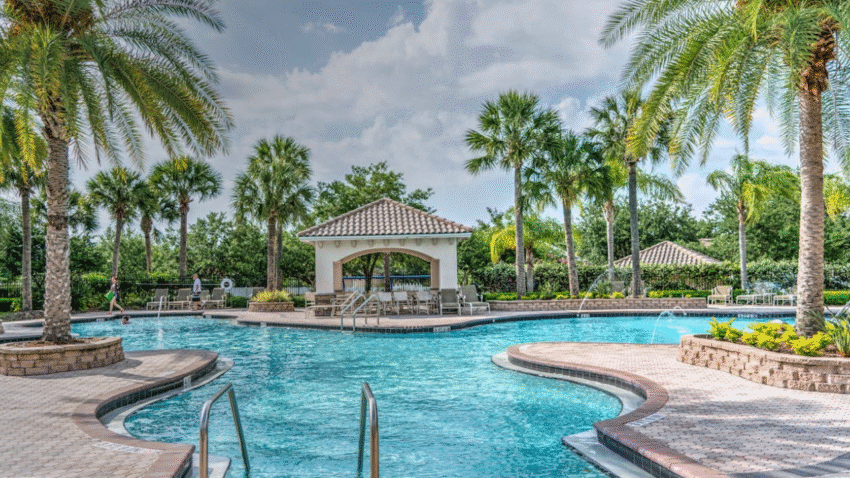Introduction
Adding pool chemicals is essential for clean, safe water—but improper handling can lead to serious skin, eye, or respiratory injuries. Whether you’re a pool owner or simply enjoying a swim, it’s important to know how to handle pool chemical burns safely and quickly. This step-by-step guide explains what to do if someone is exposed, how to prevent these accidents, and what warning signs to watch for.
Why Pool Chemical Burn Safety Matters
Pool chemicals—like chlorine, bromine, muriatic acid, and shock treatments—are powerful sanitizers. But when misused or mishandled, they can cause:
- Skin burns and rashes
- Eye irritation or damage
- Throat, lung, or nasal inflammation from fumes
- Chemical reactions if mixed improperly
Whether it’s a splash during maintenance or overexposure while swimming, knowing how to treat and prevent pool chemical burns can protect everyone using the pool.
Step-by-Step Guide to Handling Pool Chemical Burns
Step 1: Remove the Person from the Source Immediately
If someone comes into contact with pool chemicals—either directly or from over-chlorinated water—get them out of the pool or chemical area immediately.
- For skin burns: Remove affected clothing if needed.
- For eye exposure: Avoid rubbing and move to an eyewash station or use clean water.
- For inhalation exposure: Move the person to fresh air.
⚠️ Caution: If fumes or splashes are involved, protect yourself with gloves before assisting.
Step 2: Rinse the Affected Area Thoroughly with Water
Use cool, clean water to rinse chemical residue away.
- Skin contact: Rinse for at least 15–20 minutes. Do not apply ointments unless instructed by a professional.
- Eye contact: Flush eyes for at least 15 minutes, keeping eyelids open.
- Inhalation: Encourage slow, deep breathing in fresh air. Use a fan to circulate air if indoors.
💡 Tip: Use a gentle shower or garden hose for skin exposure if a sink isn’t available.
Step 3: Call Emergency Services if Symptoms Are Severe
Seek immediate medical help if the individual experiences:
- Blistering or open burns
- Severe pain or redness
- Trouble breathing or swallowing
- Persistent coughing or wheezing
- Vision changes or eye swelling
- Signs of shock (dizziness, rapid pulse, pale skin)
📞 Call 911 or go to the emergency room for anything beyond mild irritation.
Step 4: Remove and Isolate Contaminated Materials
Safely collect and dispose of any clothing, towels, or equipment that came into contact with the chemical.
- Place items in a sealed plastic bag until they can be washed or discarded.
- Wash hands thoroughly after handling.
- Clean any surfaces where the chemical may have splashed.
⚠️ Do not mix contaminated materials with other laundry—wash separately or dispose of them.
Step 5: Document the Incident for Future Prevention
After treatment, take a moment to:
- Identify which chemical caused the burn
- Record how it happened (spill, splash, overexposure, etc.)
- Review product labels and safety instructions
- Adjust future pool care practices to prevent recurrence
🧪 Related Tip: [Check out our guide on how to test and balance pool chemicals] to avoid over-treating your water.
Common Causes of Pool Chemical Burns
Knowing how these accidents happen can help prevent them.
1. Splashing or Spilling During Chemical Handling
✅ Always add chemicals slowly and carefully using protective gear.
2. Swimming Too Soon After Adding Chemicals
✅ Wait at least 30 minutes to several hours depending on the product label.
3. Overdosing Chlorine or Shock
✅ Use a test kit before and after treating the pool to verify safe levels.
4. Improper Mixing of Chemicals
✅ Never mix chlorine with acids or other chemicals—it can release toxic gas or heat.
5. Inhaling Fumes While Opening Containers
✅ Open chemical containers outdoors or in a well-ventilated area.
Extra Tips & Pool Safety Hacks
- Wear protective gloves and eyewear when handling pool chemicals.
- Store chemicals in a cool, dry, ventilated place, away from other cleaning supplies or flammable materials.
- Use long-handled scoops or dispensers to keep chemicals away from your skin.
- Teach all family members and pool users about chemical safety, especially teens and helpers.
📋 Bonus Tip: Keep a printed pool chemical safety chart in your equipment area with emergency numbers listed.
How to Prevent Pool Chemical Burns While Swimming
Sometimes swimmers—not just those handling chemicals—can be affected by poor pool maintenance.
1. Always Test Water Before Use
Make sure chlorine levels are between 1–3 ppm and pH between 7.2–7.6 before allowing swimmers in.
2. Use Pool Chemicals at Night
Adding chlorine or shock in the evening gives the chemicals time to disperse before swimmers arrive.
3. Avoid Swimming After Shock Treatments
Most pool shock products require a waiting period of 8–12 hours before swimming is safe again.
4. Rinse Off After Swimming
A quick shower removes chemical residue from skin and suits—reducing irritation or allergic reactions.
🧼 Related Tip: [Learn how to shock your pool properly] to maintain safety while maximizing sanitation.*
Conclusion
Pool chemical burns are serious—but preventable. By learning how to recognize exposure, respond quickly, and implement smart handling and swimming practices, you’ll protect everyone who enjoys your backyard pool. Whether you’re doing routine maintenance or supervising swimmers, a little caution goes a long way in keeping your pool safe and injury-free.
👉 Bookmark this guide and keep it printed near your pool equipment for quick reference during emergencies.
